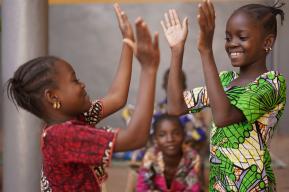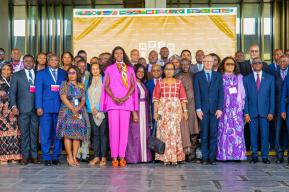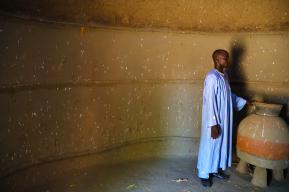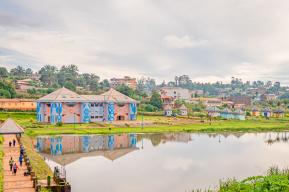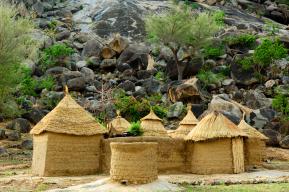Over the last few years, Cameroon has been facing a number of complex crises: the Far North region has been critically affected by the Boko Haram crisis in the Lake Chad Basin; in the East region, the arrival of refugees from the Central African Republic has increased humanitarian and basic needs by over 30%; and the North-West and South-West regions are being weakened by the so-called “Anglophone” crisis. In the face of this particularly volatile situation, many communities have been forced to flee, leaving traditional practices, built heritage and museum collections behind. After Boko-Haram repeatedly destroyed and looted museums in the Far North, Cameroon solicited UNESCO’s Heritage Emergency Fund (HEF) to help secure local museum collections and create an environment for building peace.
Until the crisis, the region’s rich heritage and local museums were a prominent uniting element, bringing communities together and creating income-generating activities like cultural tourism. To restore culture and hope, the HEF partnered with Cameroon’s Ministry of Arts and Culture to conduct rapid damage assessments for 7 cultural sites and museums, with a specific focus on safeguarding built heritage and securing museums and their collections.
The exercise revealed that built structures, such as at the Bafut Royal Palace and the Tour de Goto Goulfey, both inscribed on UNESCO’s World Heritage Tentative List, have been damaged. Stone shrines have been pulled down, sites shattered by bullets, and some museum collections destroyed. The recurrent violence has also displaced communities, which in turn has resulted in the disruption of intangible cultural heritage practices and expressions.
Emergency measures to safeguard heritage
In response to the results of the assessments, the HEF supported urgent rehabilitation interventions for the damaged buildings and trained local communities in heritage first-aid and preservation. Protecting cultural heritage during an armed conflict is challenging, and, at times, can be life-threatening. Yet communities have a deep need to protect their cultural heritage, as it provides a sense of continuity amid turmoil and uncertainty.
In Bafut, the Royal Palace museum and queen’s house were restored under the supervision of a traditional architect and the Bafut Fon (King) to ensure the site’s integrity and authenticity. The activity employed 55 workers, providing training and much needed income. Other rapid interventions were carried out at the Mankon, Babungo and Lifafa museums.
At the Tour de Goto Goulfey in the Far North region, the museum was restored by 20 women who are the custodians of traditional techniques in preparing materials and the design of the museum.

Building back peace in Bafut
Apart from the different rehabilitation activities, local communities have noticed the positive impact the intervention has had on peacebuilding and well-being. In Bafut for instance, Queen Constance Abumbi, observes that people are gradually returning to the village because the rehabilitations have given them hope.
Some of the young boys who previously joined armed forces for survival now prefer to seek employment at the Palace. With people visiting the museum once again, there is renewed hope for peace and reconstruction.
This project has been financed by UNESCO's Heritage Emergency Fund through the generous support of the following partners: the Qatar Fund for Development, the Kingdom of Norway, the Government of Canada, ANA Holdings INC., the Principality of Monaco, the Kingdom of the Netherlands, the Republic of Estonia, the Grand Duchy of Luxembourg, the Slovak Republic, the Principality of Andorra, and the Republic of Serbia.




